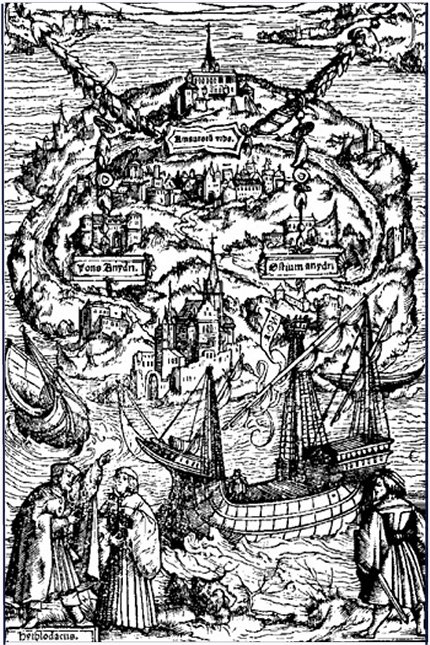After five centuries of conquest and occupation by European powers, little of that ideal world remains in the western hemisphere, except perhaps in some undiscovered tropical village along the Amazon. What remains of any semblance of traditional culture exist in enclaves of poverty surrounded by development and wealth. The poverty in these enclaves is the result of many decades of injustice--massive land theft, forced removal, and physical and cultural annihilation. This has left tribes in alien and much-reduced homelands unsuitable for the economic systems and lifeways that had sustained them for centuries, where they are wholly dependent upon their occupiers.
Utopia (book)
Toby Green uses this gripping slice of history to enquire into how feasible the utopian ideal is, especially when matched with our contemporary emphasis on the individual.
Bartolome de Las Casas and Thomas More's Utopia
Comment: Trimble goes on to say he's never seen descriptions of Indian "utopias" and wonders if Indians can return to a traditional "utopia" society. I think I have seen such descriptions. They usually apply to tribes that were smaller and more peaceful, not larger and more warlike.
And no, I don't think tribes can return to a utopian lifestyle based on traditional ways. Nor do I think that's necessarily a good goal. My ideal is to integrate traditional values of community, conservation, and thinking ahead into modern society. To create sustainable economic, political, and social systems that can provide for the world's people.
For more on the subject, see Indians Gave Us Enlightenment and Hercules vs. Coyote: Native and Euro-American Beliefs.
Below: "Woodcut by Ambrosius Holbein for a 1518 edition of Utopia. The lower left-hand corner shows the traveler Raphael Hythlodaeus, describing the island."


1 comment:
It has always seems to me that it is either the truly improvished exposed to things that "seem" better or the truly wealthy looking back at things that "seem" simple who dream of a Utopia drastically distanced from the reality being faced. In their vision they tend to romanticize that which they aren't part of but believe to be better than their lot.I don't know if that's good or bad or just if it "is"..
Post a Comment